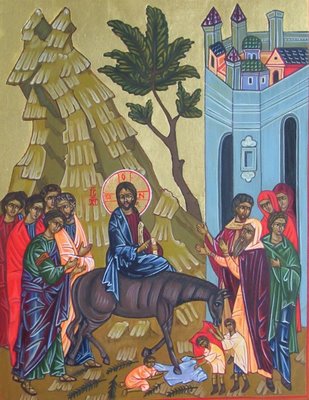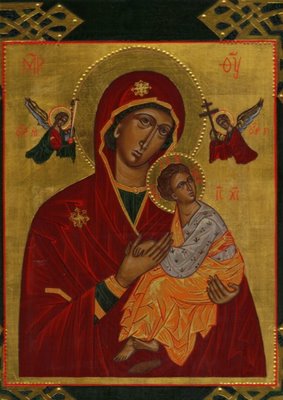St. John of the Cross

This icon shows St. John of the Cross (1542-1591), a famous Spain mystic, teacher and poet. Together with St. Therese of Aviala he reformed the monastery of the Carmelitans back to old strictness and concentration. But most of all he was a big self-reformer.
The reform of monastical life did not only find friends, but his old order wanted that he should give up and return. As he objected he was imprisoned in the monastery in Toledo in a small windowless room for 9 months. Here in this darkness of the room and likewise of his soul he found unexpectedly the bright shining light of Divine Love lightening up from within with a force never experienced so far. It flowed over in spiritual love-poetry, which is famous until today.
The icon shows St. John of the Cross with pencil. The voice speaking is the Higher Power symbolized in the hand of God. The written sentence is from the "Spiritual Cantical", verse 28:
My soul is occupied,
And all my substance in His service;
Now I guard no flock,
Nor have I any other employment:
My sole occupation is love.
For those interested in more on St.John, see at: http://www.newadvent.org/cathen/08480a.htm http://en.wikipedia.org/wiki/John_of_the_Cross










